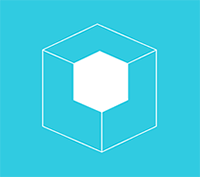
Ceramic 3D printing
In addition to plastic and metal, ceramics comprise a large material group commonly used in 3D printing. In order to be able to produce high-quality objects with the material-typical high density from ceramic powder, we process the material in additive manufacturing in a multi-step process. First, a green body is built up from a suspension of ceramic powder in a monomer solution using a stereolithography process.
To this end, the building plate is submerged in the liquid and then hardened layer by layer based on the CAD model using UV light. In order to obtain a 3D object comprised entirely of ceramic, the polymer component is subsequently removed from the green body by pyrolysis. These polymers are only needed as a binder to temporarily stabilize the workpiece. In a last step, the 3D object finally undergoes a sintering process to compact the ceramic particles.
Selective laser sintering (SLS)
In the 3D printing process selective laser sintering (SLS), powdered materials made of thermoplastic resins are melted and built up into functional, mechanically resilient 3D components, which are frequently used in industrial settings. The powder is applied to a movable build platform using a blade or roller. A laser melts the material at the appropriate locations pursuant to the coordinates from the present CAD model. The plate is subsequently lowered by the value of exactly one layer thickness, and the process repeats itself until the object is complete. The tool-less process even allows the simultaneous production of multiple manufactured products at once.
The material is heated to just below the melting point in the construction chamber so that even a small energy pulse of the laser is sufficient to melt the plastic. During the construction process, the workpiece is supported by the surrounding powder bed. Additional support structures are therefore unnecessary; a major advantage, which provides a significant degree of geometric freedom in the design of 3D models.
Selective laser melting (SLM)
Selective laser melting is used for additive processing of metal powder, and is based on the same process as selective laser sintering. A powerful laser melts the material at high temperatures of up to 1,250 °C in the laser focus. Large temperature differences can cause unwanted effects such as curling, distortion or burns. A support structure is therefore constructed on the base plate, which stabilizes the workpiece in order to ensure an optimum process sequence. This support must be removed manually afterwards. In selective laser melting, many different metals can be processed, for example stainless steel, tooling steel, aluminum or even copper. The latter is an important material in industry due to its exceptional electrical and thermal conductivity, however manual processing by bending and brazing is extremely time consuming and expensive. The use of intelligent 3D printing technology can significantly reduce this effort, thereby making cost-effective production possible starting with a batch size of 1. In the (insert link) inductor generator of the PROTIQ Marketplace, highly conductive copper inductors can be configured online according to your individual requirements.
Stereolithographie (SLA)
Developed by the American Charles “Chuck” Hull, stereolithography is the oldest among all of the 3D printing processes. It can be used to produce high-resolution plastic filigree components in no time at all, which is why the technology was and is used for rapid prototyping in particular. A liquid photopolymer (for example, epoxy resin) is used as the starting material. The plastic is cured, layer by layer, by a UV laser using CAD-based coordinates. Following irradiation, the print platform is then lowered into the plastic bath by exactly one layer thickness so that the next layer can be wetted by the liquid. Although the material changes from a liquid to a solid state upon contact with the UV light, the material is not yet stable: The complete curing is only performed in a final step, in which the component is irradiated again with UV radiation. Post-processing is usually not necessary since the surface of the objects is very smooth from the very beginning.
PolyJet/MultiJet Modeling (PJM/MJM)
The PolyJet modeling comes closest to conventional inkjet printing of any of the 3D printing processes. The print head moves quickly across the build platform, spraying fine droplets of a liquid polymer. While so doing, the material is irradiated almost simultaneously with UV light, and thus is cured directly. In addition to a variety of fully cured plastics, PolyJet 3D printing also uses waxy materials, which are built up into support structures for the 3D object by an additional print head. These structures are manually removed when the printing process is complete. In addition, the use of more than two print heads makes it possible to produce components that may be comprised of multiple colors or even different materials; a significant advantage in the production of complex functional prototypes and display models.
